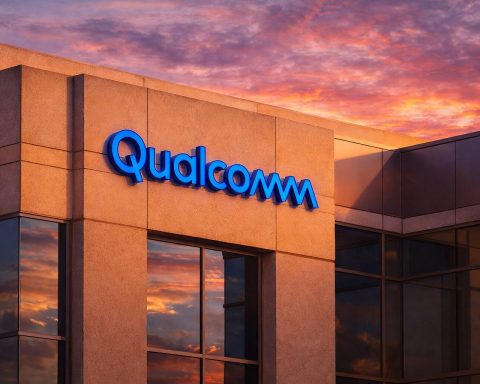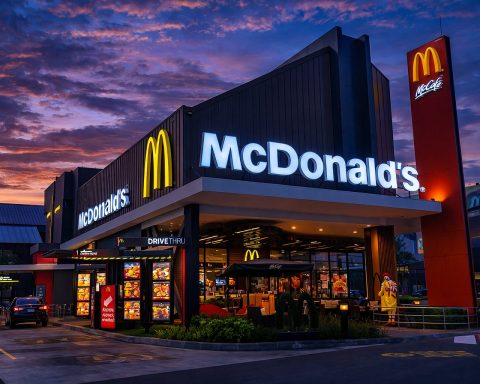Merck & Co., Inc. (NYSE: MRK) is in rally mode on Monday, November 24, 2025. By early afternoon, MRK stock is trading around $101–$102 per share, up roughly 3.5–3.8% on the day, near its highest levels of 2025 and within a few percent of its 52‑week high. [1]
The move comes as Wells Fargo upgraded Merck to “Overweight” from “Equal Weight” and lifted its price target to $125, alongside fresh FDA approvals and pipeline updates that strengthen the company’s story beyond flagship cancer drug Keytruda. [2]
MRK stock today: price action and key stats
As of early afternoon trading on Monday:
- Share price: about $101.3–$101.4
- Daily gain: roughly +3.6–3.7%
- Intraday range: roughly $99 to just over $102
- Market cap: about $252 billion
- 52‑week range:$73.31 – $105.07
- Trailing P/E: ~13.4
- Forward P/E: ~12.0
- Annual dividend:$3.40 per share, an indicated yield around 3.3–3.4% at current prices [3]
Options activity has also heated up. According to Schaeffer’s Research, MRK’s 14‑day Relative Strength Index (RSI) has surged into the 90s, firmly in technically “overbought” territory, while call options volume outpaces puts more than 3:1, with call buying elevated versus the past year. [4]
From a trading perspective, that combination—near 52‑week highs, strong momentum, and an overbought RSI—often means the longer‑term trend is positive but the stock may be vulnerable to short‑term pullbacks if profit‑taking kicks in.
Why MRK stock is rallying: Wells Fargo sees a “future beyond Keytruda”
The main catalyst behind today’s move is a bullish call from Wells Fargo:
- Rating raised from “Equal Weight” to “Overweight.”
- Price target increased from $90 to $125 per share. [5]
In a note highlighted by Reuters, GuruFocus and Investing.com, Wells Fargo analyst Mohit Bansal argues that Merck has de‑risked more than $20 billion in unadjusted peak sales over the last 3–6 months through business development and pipeline progress, including the Cidara deal and positive clinical data. The firm now sees Merck entering a “catalyst‑rich” 12–18 month stretch across oncology, HIV and cardiovascular programs. [6]
Critically, Wells Fargo says it “no longer sees a major cliff” when Keytruda loses exclusivity around 2028–2030, and believes Merck can fill the expected revenue gap and still grow into the early 2030s. The bank’s internal sum‑of‑the‑parts analysis suggests:
- Merck’s pharma business is trading at roughly 8.7x 2026 earnings, viewed as too low given pipeline value.
- The pipeline could support $50+ billion in unadjusted peak sales, with about $23 billion of that already “de‑risked.” [7]
That message—the Keytruda patent cliff might be a hill instead of a cliff—is exactly what many long‑term investors wanted to hear, and it helps explain why MRK is among the top gainers in the Dow Jones Industrial Average today. [8]
Fresh FDA approvals: Keytruda and Keytruda QLEX combo in bladder cancer
Today’s upgrade also comes on the heels of a major regulatory win for Merck’s oncology franchise:
- On November 21, 2025, the U.S. FDA approved Keytruda (IV) and Keytruda QLEX (subcutaneous)—each in combination with Astellas and Pfizer’s Padcev (enfortumab vedotin)—as perioperative treatment for adults with muscle‑invasive bladder cancer (MIBC) who are ineligible for cisplatin‑based chemotherapy. [9]
The regimen is used before surgery (neoadjuvant) and continued after cystectomy (adjuvant), making it a full perioperative strategy. Merck notes that these approvals represent the first PD‑1 inhibitor plus antibody‑drug conjugate (ADC) regimens cleared for this patient population. [10]
The decision was based on the Phase 3 KEYNOTE‑905 trial, where:
- Keytruda + Padcev reduced the risk of event‑free survival (EFS) events by about 60% versus surgery alone.
- The combo showed a roughly 50% improvement in overall survival compared with surgery alone, after a median follow‑up of ~25–26 months. [11]
From a stock perspective, this matters because:
- Bladder cancer is a sizable market, and perioperative use expands beyond metastatic disease.
- It showcases Merck’s strategy of layering Keytruda into earlier‑stage settings, which tends to support longer duration of therapy and stickier revenue.
- It leverages Keytruda QLEX, the newer subcutaneous formulation combined with berahyaluronidase alfa, which could be more convenient than IV infusions in many settings. [12]
Subcutaneous Keytruda approvals extend the franchise globally
Merck has been busy on the formulation front as well:
- On November 19, 2025, the European Commission approved KEYTRUDA SC, a subcutaneous version marketed in Europe, for all adult Keytruda indications—the first and only SC immune checkpoint inhibitor in Europe that can be administered by a health‑care provider in as little as one minute. [13]
- In the U.S., Keytruda QLEX—a fixed combination of pembrolizumab and berahyaluronidase alfa—was previously approved for all solid‑tumor Keytruda indications and now features in the newly cleared bladder cancer regimen with Padcev. [14]
These SC formulations:
- Increase patient and provider convenience (shorter administration, potentially in more care settings).
- May improve capacity and throughput in busy infusion centers.
- Could help defend share against rival checkpoint inhibitors by making Keytruda easier to use in practice.
That strengthens one of Merck’s most important assets exactly as it heads towards its loss of exclusivity timeline.
Hematology pipeline spotlight: ASH 2025 data incoming
Merck also grabbed headlines this morning with a new hematology‑focused pipeline update:
- The company announced it will present more than 20 abstracts at the American Society of Hematology (ASH) 2025 Annual Meeting (Dec. 6–9, Orlando). [15]
Key programs highlighted include:
- MK‑1045, a CD19xCD3 T‑cell engager for certain leukemias and lymphomas (Phase 1b/2 and other early studies).
- Bomedemstat (MK‑3543), an oral LSD1 inhibitor in myeloproliferative diseases such as polycythemia vera and essential thrombocythemia (Phase 2 and 3 studies).
- Nemtabrutinib (MK‑1026), a non‑covalent BTK inhibitor designed to overcome common resistance mutations seen with older BTK drugs.
- Zilovertamab vedotin (MK‑2140), a ROR1‑targeting antibody‑drug conjugate being studied across several B‑cell malignancies. [16]
For investors, the ASH slate demonstrates that Merck is investing meaningfully outside of solid tumors, building a second wave of oncology assets in hematologic cancers that could support revenue in the 2030s if trials are successful.
Beyond oncology: cardio‑pulmonary pipeline and oral PCSK9
On the cardio‑metabolic side, Merck is also trying to build another growth pillar:
- In October, Merck previewed data from the CORALreef Phase 3 program of enlicitide decanoate, its once‑daily oral PCSK9 inhibitor candidate, to be presented at the AHA Scientific Sessions 2025. [17]
- CORALreef Lipids and CORALreef HeFH trials target patients with hypercholesterolemia and heterozygous familial hypercholesterolemia, respectively—large markets traditionally served by statins and injectable PCSK9 antibodies. [18]
- Merck will also showcase data for WINREVAIR (sotatercept‑csrk) in pulmonary arterial hypertension (PAH), another high‑need cardio‑pulmonary indication. [19]
If enlicitide eventually wins approval, it could become one of the first oral PCSK9 inhibitors, potentially unlocking a big opportunity in cholesterol management and diversifying Merck’s revenue beyond oncology and vaccines.
Earnings backdrop: Q3 2025 beat and raised guidance
Today’s optimism is grounded in solid fundamentals. In late October, Merck reported strong third‑quarter 2025 results:
- Total sales:$17.3 billion, up 4% year over year (3% ex‑FX). [20]
- Keytruda sales:$8.1 billion, up 10% (8% ex‑FX), driven by demand across metastatic and earlier‑stage indications. [21]
- WINREVAIR:$360 million in sales, up 141%, underscoring the potential of Merck’s PAH franchise. [22]
- Non‑GAAP EPS:$2.58, up 64% from $1.57 a year earlier. [23]
Management also raised full‑year 2025 guidance:
- Sales: now expected between $64.5 billion and $65.0 billion.
- Non‑GAAP EPS: lifted to $8.93–$8.98. [24]
CEO Robert Davis emphasized that Merck is “securing [its] future” through pipeline investments and strategic deals, including the acquisition of Verona Pharma and its first‑in‑class COPD maintenance therapy OHTUVAYRE, which closed in October. [25]
Those numbers help explain why MRK was already grinding higher before today’s upgrade—and why analysts have been generally supportive.
Valuation, dividend and analyst sentiment on MRK stock
Despite the rally, MRK still trades at what many see as a reasonable valuation for a large‑cap pharma name:
- Trailing P/E: ~13.4
- Forward P/E: ~12.0
- Dividend yield: roughly 3.3–3.5%, with a $3.40 annual payout and a long history of regular dividends. [26]
Analyst sentiment is broadly constructive:
- StockAnalysis data show an average 12‑month price target around the low‑$100s (roughly mid‑single‑digit upside from current levels) and a consensus “Buy” rating from a dozen‑plus analysts. [27]
- GuruFocus reports that across a wider survey, the average target price for MRK is around $100–105, with a consensus recommendation in “Outperform” territory, and its proprietary GF Value model pegs fair value closer to $125, in line with Wells Fargo’s new target. [28]
In other words:
- The Street consensus sees modest upside from current levels.
- More bullish frameworks (like GF Value and Wells Fargo’s analysis) argue that if Merck executes on its pipeline, today’s valuation could prove too cheap.
Meanwhile, income‑focused investors have taken note of Merck’s above‑market dividend yield and investment‑grade balance sheet, with recent articles highlighting MRK as a “consistent moneymaker” and retirement‑friendly healthcare holding. [29]
Key risks for MRK investors
Despite the positive news flow, MRK stock is not risk‑free. Some of the main issues to watch:
- Keytruda patent expiry (LOE) risk
- Keytruda remains Merck’s biggest product by far. While today’s upgrade and new indications support the idea of a manageable LOE, biosimilar competition later this decade is still a major overhang. If pipeline launches or business‑development deals disappoint, the revenue gap could be larger than bulls expect. [30]
- Regulatory and pricing pressure
- Merck faces ongoing drug pricing scrutiny, including U.S. reforms and international price negotiations, which could limit margin expansion even if volumes grow.
- Clinical and execution risk
- Programs like enlicitide, MK‑1045, bomedemstat and nemtabrutinib are still in clinical development. Trial failures or safety issues could dent the long‑term growth narrative. [31]
- Short‑term technical risk after a big run
- With MRK now up strongly for November and its RSI deep in overbought territory, a near‑term pullback or consolidation would not be surprising, even if the long‑term story is intact. [32]
MRK stock outlook: Is Merck a buy after today’s jump?
For long‑term investors watching MRK stock today, the picture looks something like this:
Positives:
- A credible plan to manage the Keytruda cliff, backed by tangible pipeline and BD updates.
- Major new indications and formulations—Keytruda/Keytruda QLEX + Padcev in MIBC, Keytruda QLEX/SC global rollout—that deepen the oncology moat. [33]
- Emerging growth drivers in hematology and cardio‑pulmonary disease, including enlicitide and WINREVAIR. [34]
- A 3%+ dividend yield and mid‑teens P/E, which look reasonable relative to Merck’s growth profile and balance sheet.
Caveats:
- The stock has ripped higher in a short period, leaving it technically overbought and closer to the top of its recent range.
- Much of the bull case depends on future clinical and regulatory outcomes, which are inherently uncertain.
For growth‑at‑a‑reasonable‑price (GARP) or dividend‑oriented investors, Merck now looks like a high‑quality pharma name priced for moderate success, not perfection, with today’s upgrade underscoring the upside if the pipeline delivers. Traders, on the other hand, may see better risk‑reward on dips after the current burst of enthusiasm cools down.
As always, this article is for informational purposes only and does not constitute financial advice. Investors should consider their own risk tolerance, time horizon, and portfolio needs—or consult a licensed financial advisor—before making any decision about MRK stock.
References
1. stockanalysis.com, 2. www.tradingview.com, 3. stockanalysis.com, 4. www.schaeffersresearch.com, 5. www.tradingview.com, 6. www.tradingview.com, 7. www.tradingview.com, 8. www.marketwatch.com, 9. www.merck.com, 10. www.merck.com, 11. finviz.com, 12. www.merck.com, 13. www.merck.com, 14. www.merck.com, 15. www.merck.com, 16. www.merck.com, 17. www.merck.com, 18. www.merck.com, 19. www.merck.com, 20. www.merck.com, 21. www.merck.com, 22. www.merck.com, 23. www.merck.com, 24. www.merck.com, 25. www.merck.com, 26. stockanalysis.com, 27. stockanalysis.com, 28. www.gurufocus.com, 29. stockanalysis.com, 30. www.tradingview.com, 31. www.merck.com, 32. www.schaeffersresearch.com, 33. www.merck.com, 34. www.merck.com









